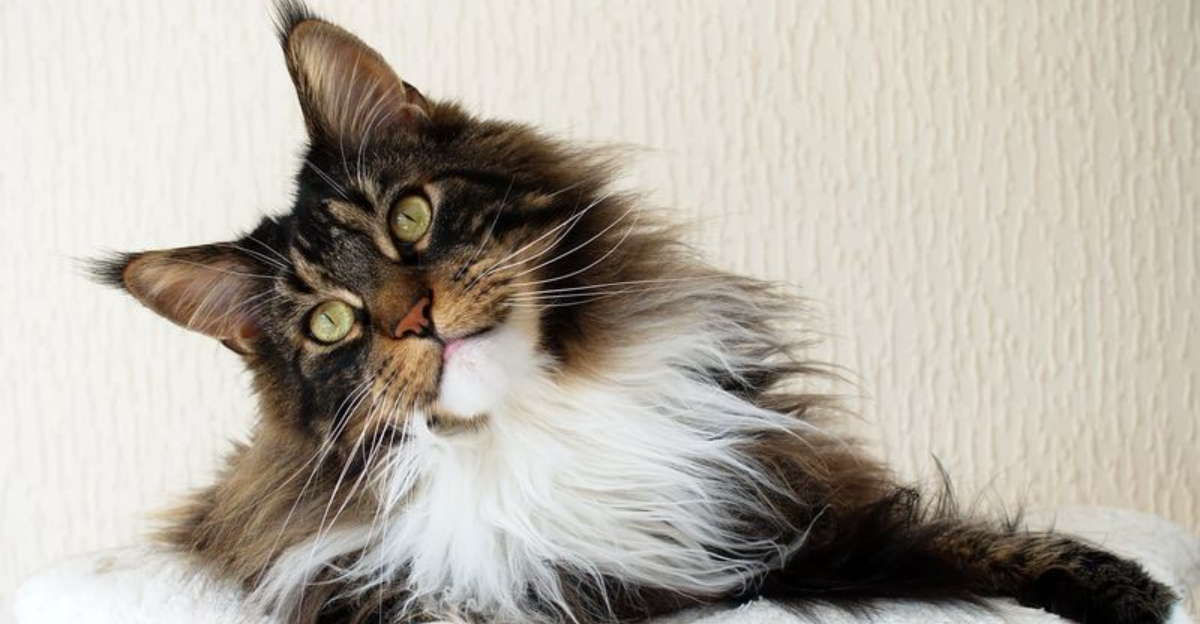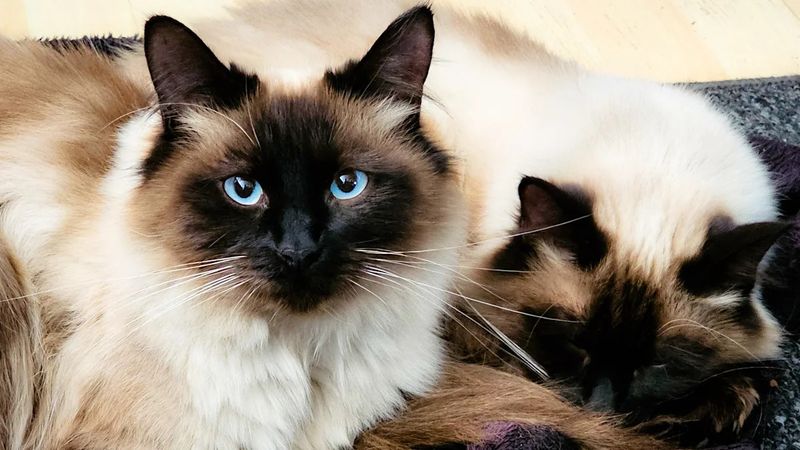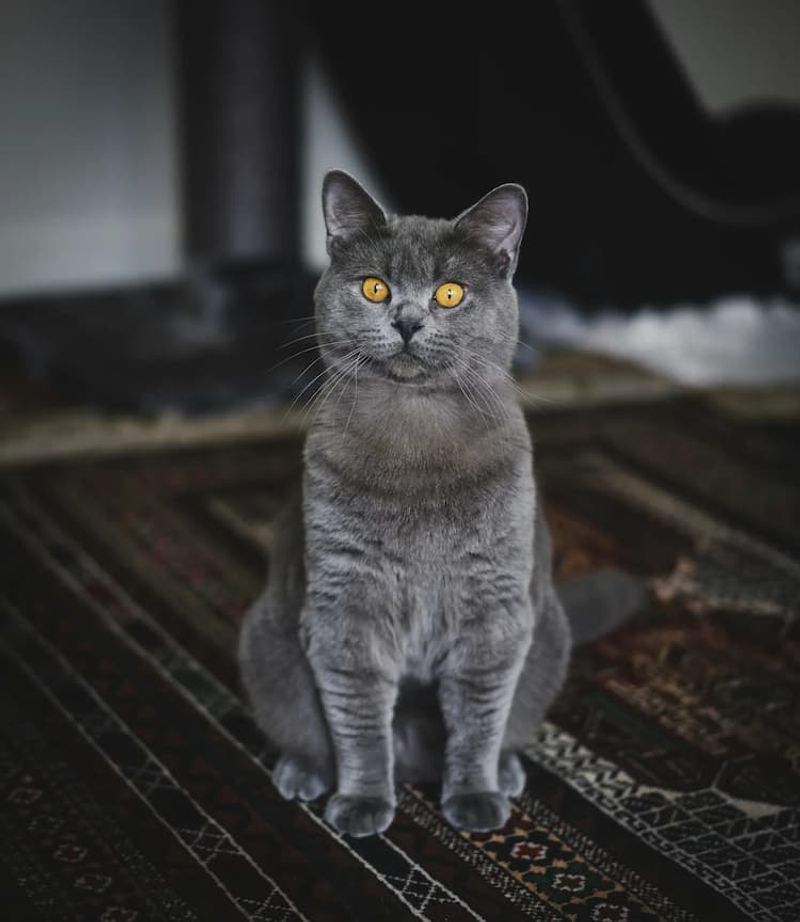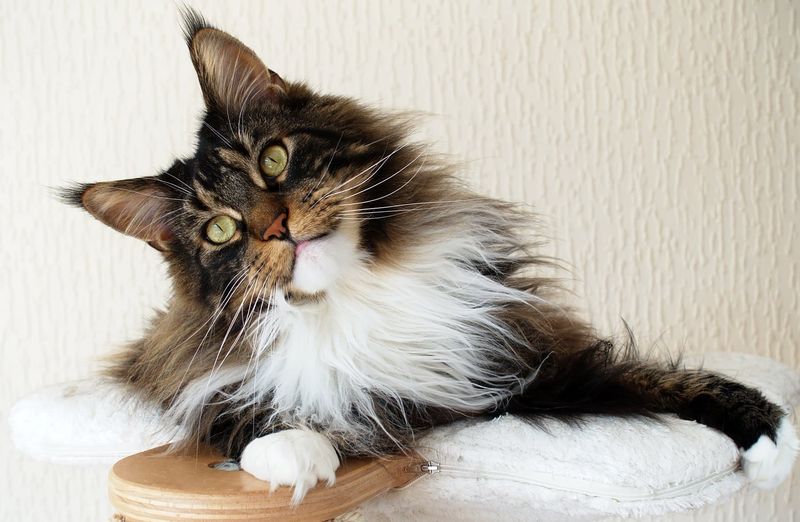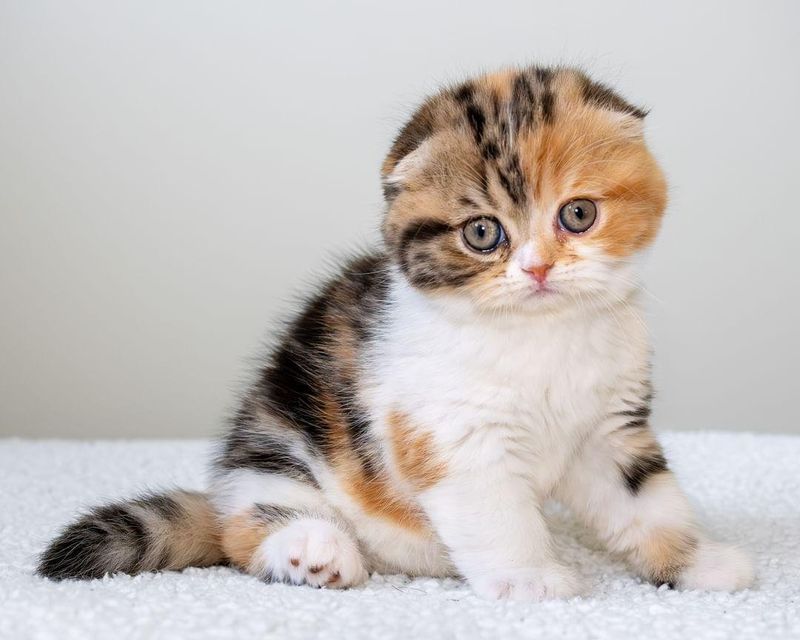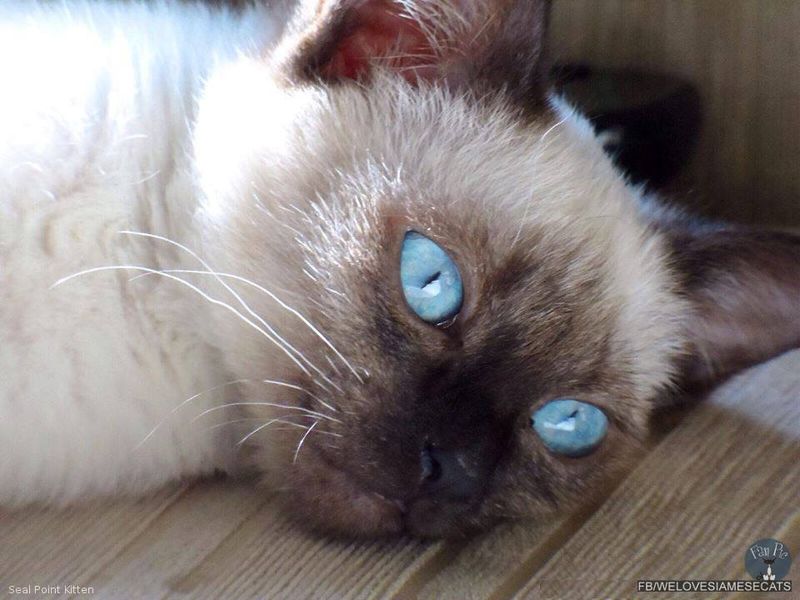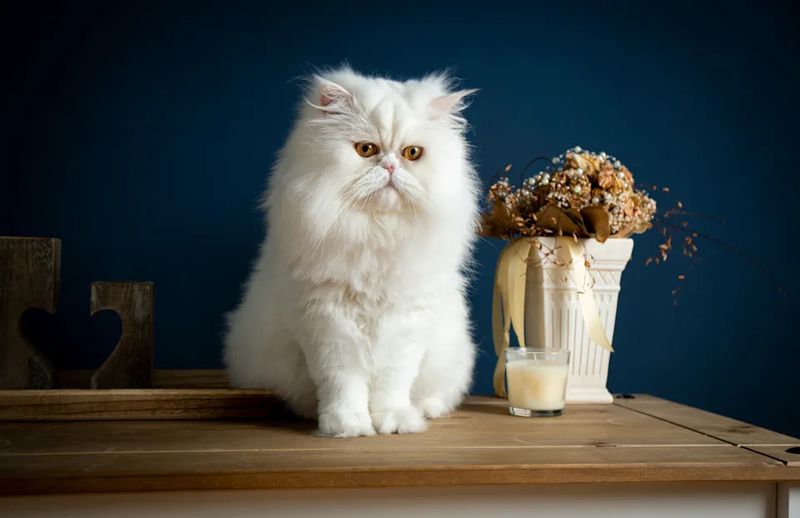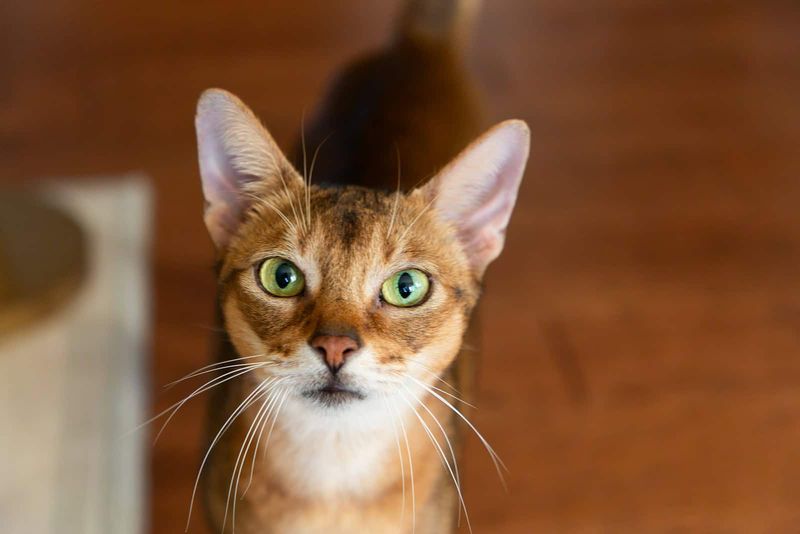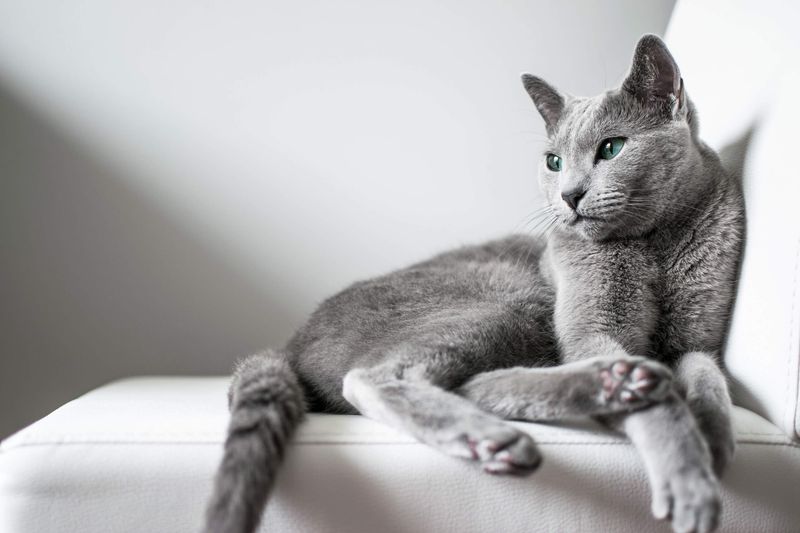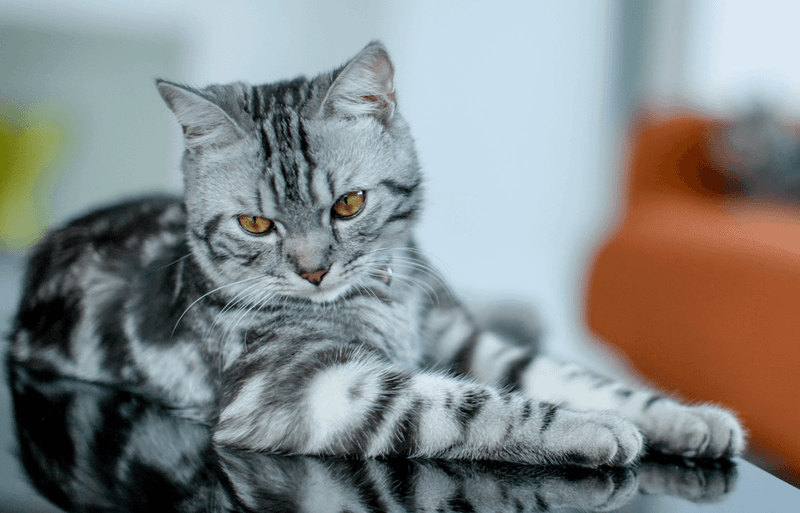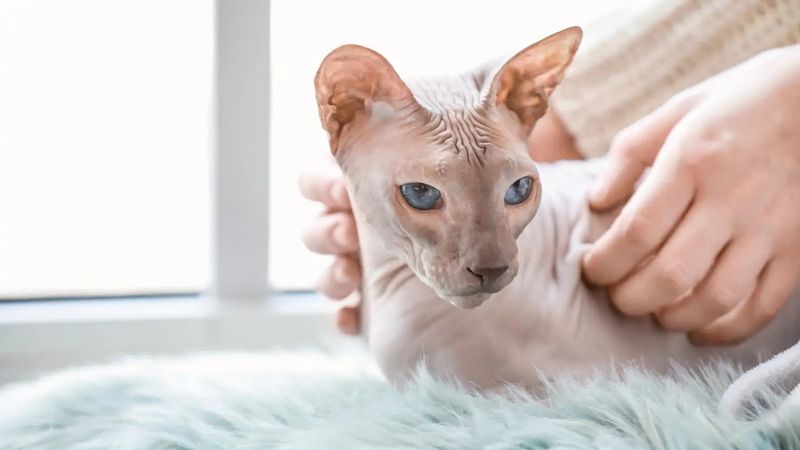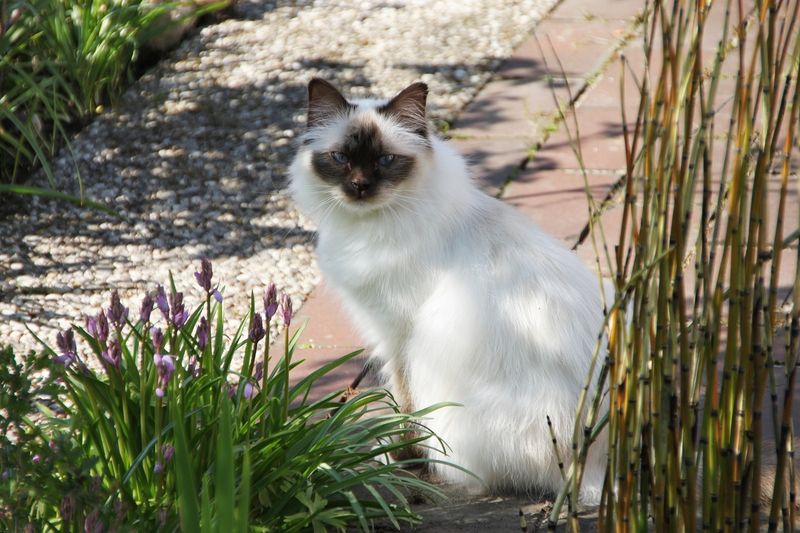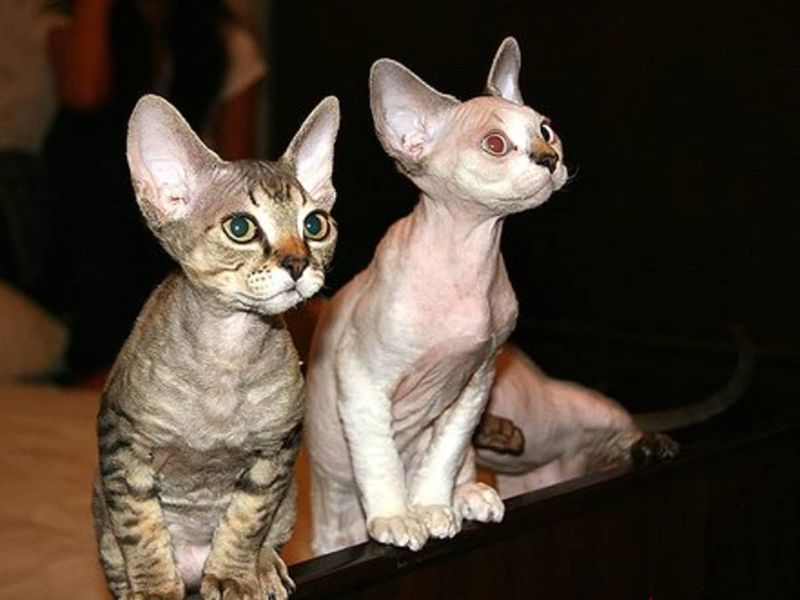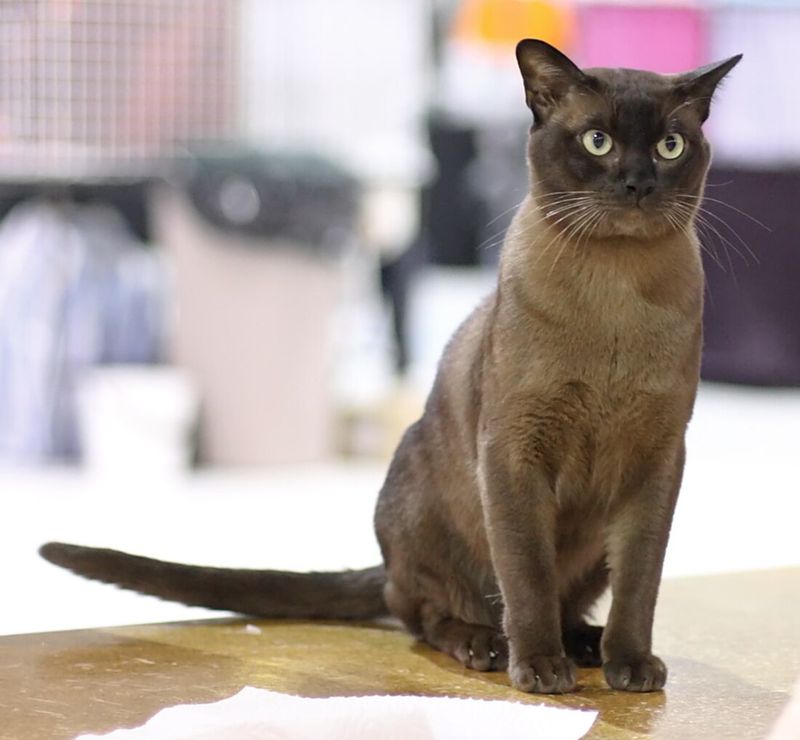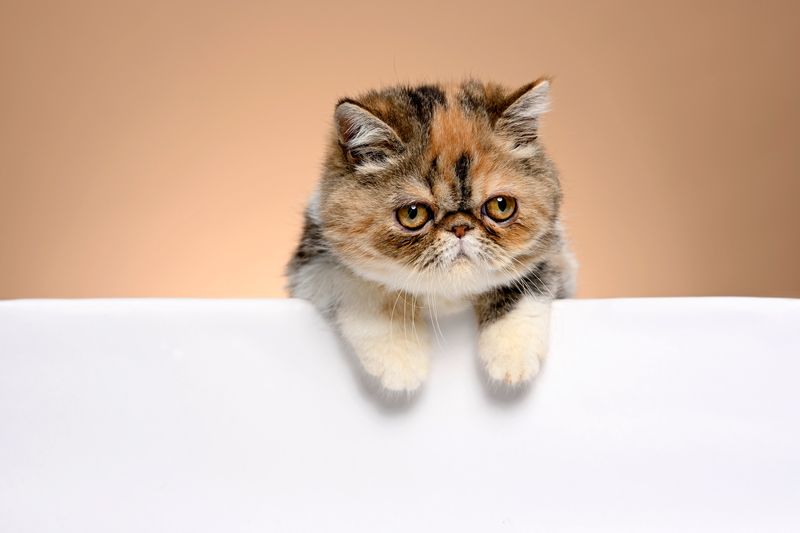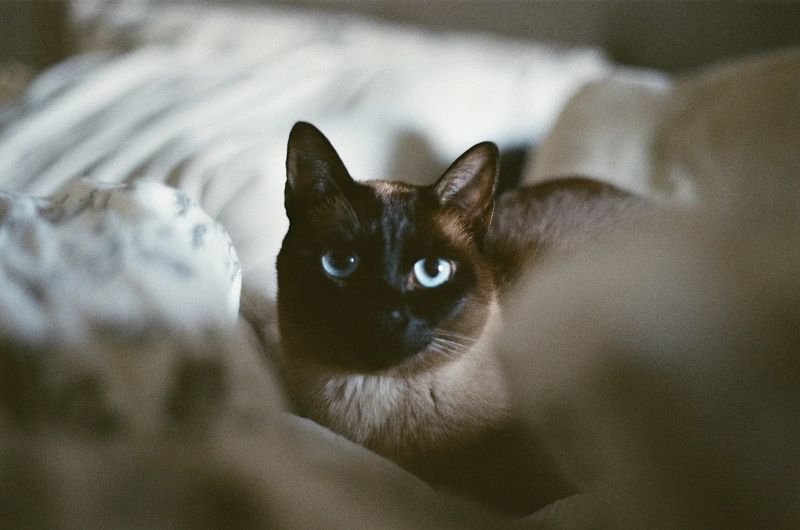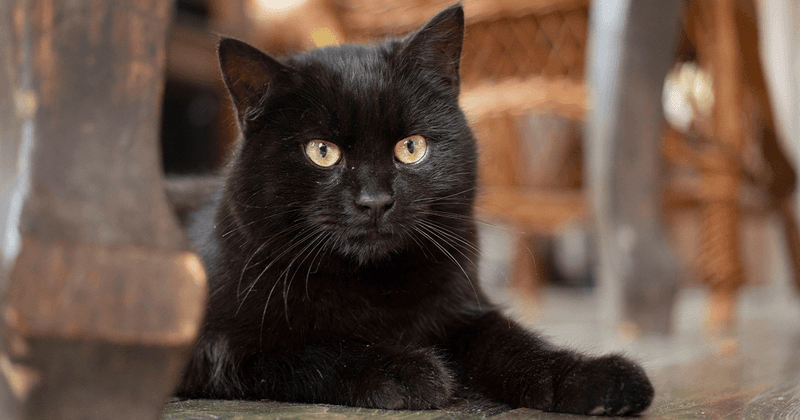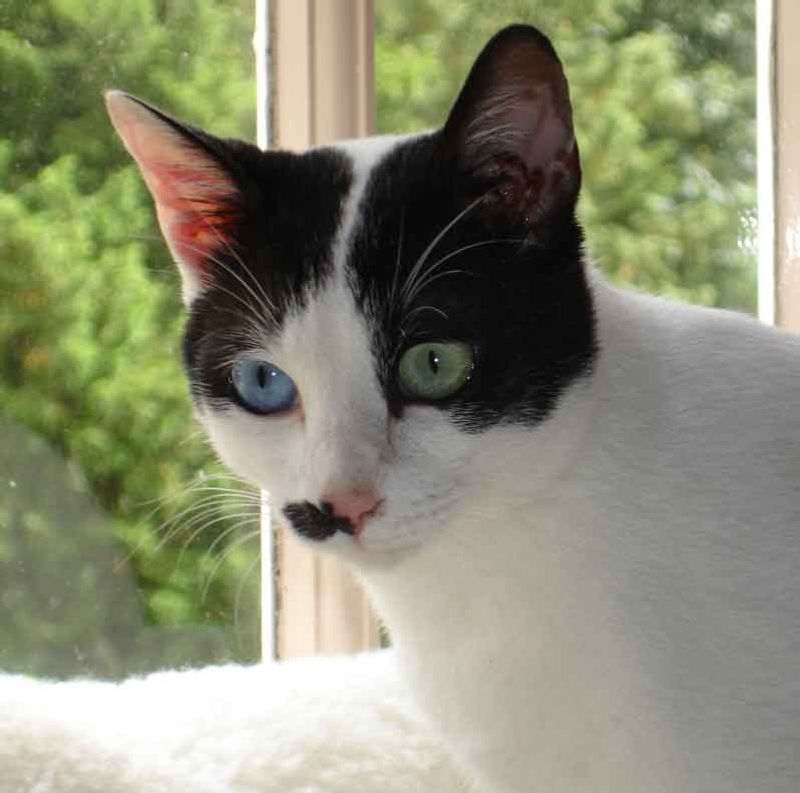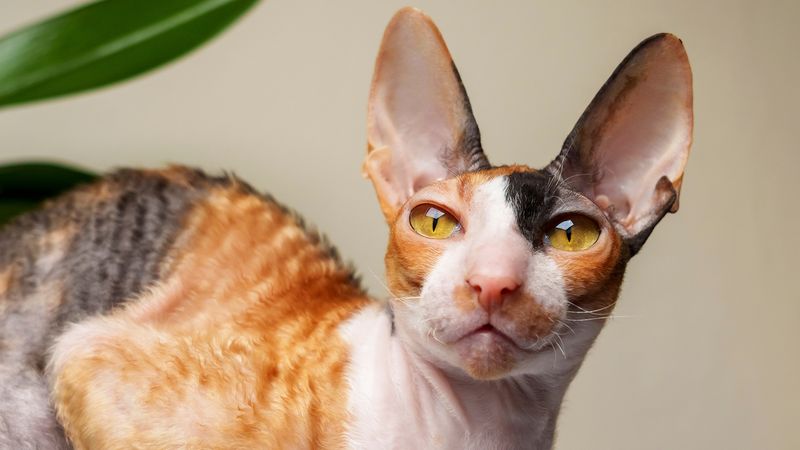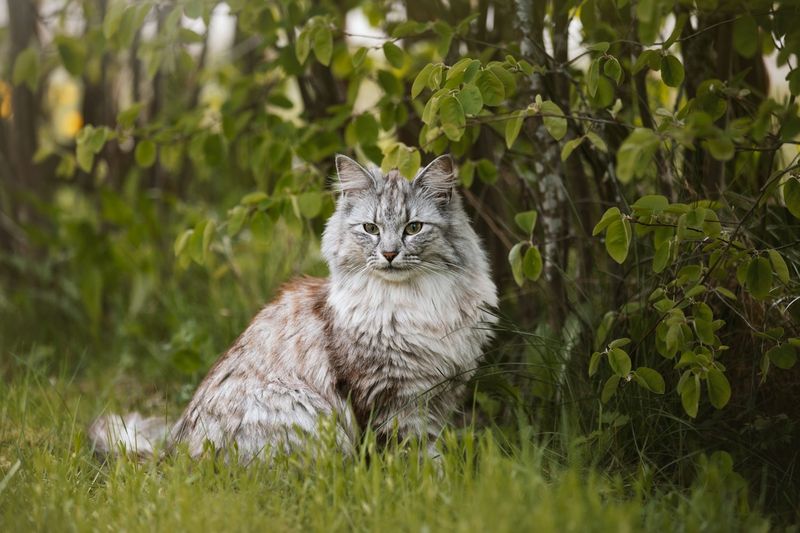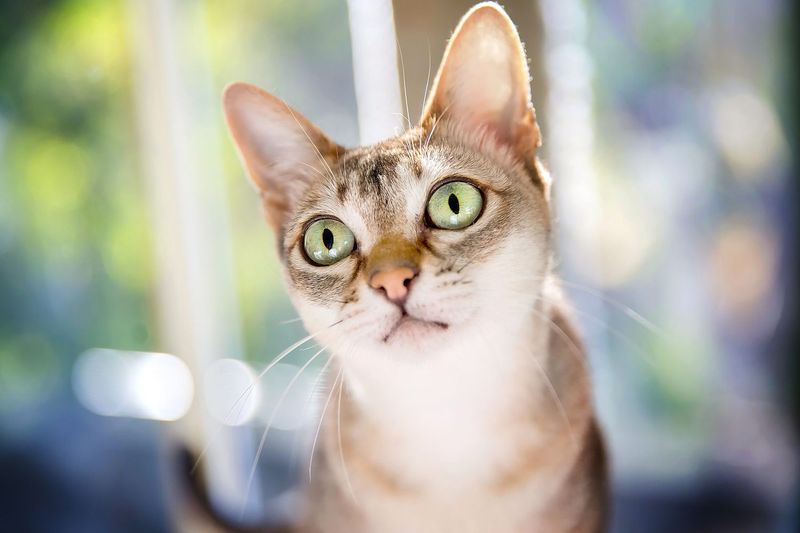📖 Table of Content:
- 1. Ragdoll
- 2. British Shorthair
- 3. Maine Coon
- 4. Scottish Fold
- 5. Siamese
- 6. Persian
- 7. Abyssinian
- 8. Russian Blue
- 9. American Shorthair
- 10. Sphynx
- 11. Birman
- 12. Devon Rex
- 13. Burmese
- 14. Exotic Shorthair
- 15. Tonkinese
- 16. Bombay
- 17. Japanese Bobtail
- 18. Cornish Rex
- 19. Norwegian Forest Cat
- 20. Singapura
Choosing the right cat breed for your home is a big decision that affects your daily life for years to come. Each breed brings its own personality, care needs, and quirks to your household. Whether you live in a tiny apartment or a sprawling house, a perfect feline friend is waiting to share your space.
1. Ragdoll
Known as the puppies of the cat world, Ragdolls love following their humans from room to room. These blue-eyed beauties typically go limp when picked up—hence their name!
Their semi-long fur requires weekly brushing but doesn’t mat easily. Most Ragdolls enjoy being held and cuddled, making them ideal for families seeking an affectionate pet.
Despite their large size (males can reach 20 pounds), they’re remarkably gentle and patient with children. Their laid-back attitude means they rarely climb curtains or jump on counters, preferring to lounge at floor level.
2. British Shorthair
Round faces with chubby cheeks give British Shorthairs their signature teddy bear appearance. These sturdy cats don’t demand constant attention but enjoy being near their people without necessarily sitting on laps.
Famous for their dense, plush coats that feel like velvet, they’re surprisingly low-maintenance. A weekly brushing keeps their fur in good condition. British Shorthairs adapt well to apartment living and don’t mind being left alone during work hours.
They tend to be quiet, rarely meowing without good reason. Their easygoing nature makes them excellent companions for first-time cat owners.
3. Maine Coon
Gentle giants of the cat world, Maine Coons combine impressive size with sweet temperaments. Their tufted ears and bushy tails help them survive harsh winters, while their large paws act like snowshoes in deep snow.
Maine Coons are known for their dog-like loyalty, often greeting owners at the door and playing fetch. Despite their wild appearance, they’re incredibly social and get along well with children, dogs, and other cats.
These cats mature slowly, not reaching full size until age 3-5. Their playful, kitten-like behavior often continues well into adulthood, bringing entertainment to households for years.
4. Scottish Fold
Those distinctive folded ears give Scottish Folds their owl-like appearance that melts hearts worldwide. Not all kittens develop folded ears—about half have normal, straight ears but still carry that sweet Scottish Fold expression.
Moderate activity levels make them suitable for various living situations. They enjoy interactive play but won’t bounce off walls with excessive energy. Scottish Folds form strong bonds with their families and prefer environments where they won’t be left alone for extended periods.
Their voices are small and quiet, rarely disturbing neighbors. When they do vocalize, it’s often with a soft chirp rather than a meow.
5. Siamese
Talkative and opinionated, Siamese cats will hold lengthy conversations with their humans about everything from dinner to the weather. Their striking blue eyes and color-point pattern make them instantly recognizable worldwide.
Highly intelligent, Siamese cats can learn tricks, walk on leashes, and solve puzzles that would stump other breeds. They form intense bonds with their people and may become depressed if left alone too long.
Short, fine coats require minimal grooming—just an occasional brushing to remove loose hairs. Their sleek bodies are surprisingly muscular and athletic, capable of impressive jumps and acrobatic feats.
6. Persian
Aristocrats of the cat world, Persians bring elegance and calm to any household. Their flat faces and long, luxurious coats have made them popular for centuries among those seeking a decorative yet affectionate companion.
Daily grooming is non-negotiable with Persians—their long fur mats easily without regular attention. Many owners give them the “lion cut” in summer months to reduce maintenance and keep them comfortable.
Persians prefer quiet environments with stable routines. They’re not jumpers or climbers by nature, preferring to observe their kingdom from floor level or a favorite cushion. Their soft, musical voices are used sparingly.
7. Abyssinian
Active and athletic, Abyssinians bring constant motion and joy to their homes. Their ticked coats—where each hair has bands of color—create a wild appearance reminiscent of small cougars.
Abyssinians form strong bonds with their families but aren’t typically lap cats. They prefer interactive play and participating in household activities. These cats excel at finding high perches, so providing cat trees and shelves keeps them happily surveying their territory.
Natural curiosity drives them to investigate everything, from shopping bags to visitors’ pockets. Despite their high energy, they’re remarkably well-behaved and rarely destructive when provided with adequate stimulation.
8. Russian Blue
Shimmering silver-tipped blue fur feels like plush velvet under your fingers when you pet a Russian Blue. These medium-sized cats combine elegance with athleticism and intelligence.
Shy around strangers but devoted to their families, Russian Blues often bond closely with one person in the household. Their reserved nature makes them perfect for quiet homes. Russian Blues shed minimally compared to other breeds, making them suitable for allergy sufferers who can’t tolerate higher-shedding cats.
They’re creatures of habit who appreciate regular feeding times and play sessions. While not overly demanding, they enjoy interactive toys that challenge their problem-solving abilities.
9. American Shorthair
Descended from working cats that came to America on ships, American Shorthairs maintain their hunting skills while adapting perfectly to family life. Their muscular bodies and strong jaws originally served to keep rodents away from grain stores.
These cats strike an ideal balance between independence and affection. They enjoy company but can entertain themselves when necessary. American Shorthairs typically live 15-20 years, making them long-term family members.
Available in over 80 color and pattern combinations, there’s an American Shorthair to match any aesthetic preference. Their short, dense coats need just weekly brushing to remove loose hair and distribute skin oils.
10. Sphynx
Contrary to popular belief, hairless Sphynx cats aren’t maintenance-free. Their skin produces oils that would normally be absorbed by fur, requiring weekly baths to prevent stickiness. They also need sun protection and warm clothing in cold weather.
Sphynx cats compensate for their lack of fur with oversized personalities. Extremely social, they demand attention and involvement in family activities. Their skin feels like warm suede and comes in various colors and patterns—even though there’s no actual fur.
Body temperature runs higher than other cats, making them living heating pads for chilly humans. They’ll happily sleep under blankets or cuddle against your neck on cold nights.
11. Birman
Legend claims Birmans were temple companions to priests in ancient Burma, and their gentle demeanor certainly suits a meditative lifestyle. Their striking appearance features white “gloves” on all four paws—a breed standard requirement.
Birmans possess silky, medium-length fur that rarely mats, making grooming easier than with other longhaired breeds. A weekly brushing usually suffices. They adapt well to different household dynamics, getting along with children, seniors, and other pets.
Unlike some active breeds, Birmans know how to relax. They balance playful moments with peaceful ones, making them suitable for various lifestyles. Their soft voices are used sparingly, typically only when they truly need something.
12. Devon Rex
Mischievous elves of the cat world, Devon Rex cats sport wavy, short coats that feel like crushed velvet. Their oversized ears and large eyes give them an impish, almost alien appearance that captures attention immediately.
Devon Rex cats remain kitten-like well into adulthood, bringing playfulness to households for years. They’re known for perching on shoulders like parrots and inserting themselves into whatever activity their humans are doing. These social butterflies don’t do well when left alone for long periods.
Their minimal shedding makes them good choices for homes where cleanliness is important. However, their thin coats mean they seek warmth, often burrowing under blankets or cuddling with people.
13. Burmese
Solid and surprisingly heavy for their size, Burmese cats feel like bricks wrapped in silk when picked up. Their short, glossy coats shine like satin in sunlight and require minimal grooming—just an occasional wipe with a chamois cloth.
Burmese cats believe humans exist primarily to love them. They demand involvement in all household activities and will follow their people from room to room. Their intelligence allows them to learn tricks easily, including fetching and coming when called.
Vocally, they have distinct personalities, with some being chatty while others communicate more through body language. Their lifespans often reach 16-18 years, making them long-term family members.
14. Exotic Shorthair
Combining Persian looks with easier maintenance, Exotic Shorthairs are sometimes called “lazy man’s Persians.” Their plush, dense coats require just weekly brushing instead of the daily grooming their Persian ancestors demand.
Sweet and undemanding, Exotic Shorthairs enjoy quiet companionship rather than wild play sessions. They’re ideal for apartments or homes where noise might be an issue. Their faces share the Persians’ flat profile, giving them that distinctive teddy bear appearance that many find irresistible.
While not hyperactive, they enjoy short play sessions with feather toys or crinkle balls. Their moderate energy levels make them suitable companions for seniors or busy professionals.
15. Tonkinese
Born from crossing Siamese with Burmese cats, Tonkinese blend the best qualities of both parent breeds. They typically have aqua eyes—a distinctive feature that’s neither the blue of Siamese nor the gold of Burmese.
Tonkinese cats thrive on interaction and play. They learn tricks easily and enjoy showing off for visitors. Unlike some breeds that bond with one person, Tonkinese usually spread their affection throughout the household.
Their coats come in various point colors but with less contrast than Siamese. The short, silky fur needs minimal grooming—just occasional brushing to remove loose hairs. Their athletic bodies are muscular yet elegant, capable of impressive jumps and acrobatics.
16. Bombay
Mini panthers for your living room, Bombay cats feature sleek black coats and copper eyes that glow in certain lighting. Despite their wild appearance, they were bred specifically as house pets with friendly, outgoing personalities.
Bombays bond strongly with their families and don’t like being left alone for long periods. Many learn to walk on leashes and enjoy supervised outdoor adventures. Their short coats are remarkably low-maintenance, requiring just occasional brushing to remove loose hairs and distribute skin oils.
These cats tend to be warmer than other breeds, making them excellent bed warmers on chilly nights. Their playful nature continues into adulthood, bringing entertainment to households for years.
17. Japanese Bobtail
Considered lucky in Japan for centuries, these cats feature distinctive bobbed tails that look like pom-poms or rabbit tails. No two tails are exactly alike—each has a unique shape and length.
Japanese Bobtails are active, intelligent companions who enjoy learning tricks and playing games. They’re known for their strong jumping abilities and graceful movements. Many Japanese Bobtails enjoy water and may dip their paws in water bowls or even join their humans in the shower.
Their coats come in various colors and patterns, with the tri-color (mi-ke) being especially prized in Japan. The short to medium-length fur requires minimal grooming—just weekly brushing to remove loose hairs.
18. Cornish Rex
Sporting wavy, downy fur that feels like velvet, Cornish Rex cats lack the normal outer guard hairs of most cat coats. This unique coat requires minimal grooming but offers less protection, making them indoor-only cats in most climates.
Cornish Rex cats maintain kitten-like playfulness well into old age. Their long, slender legs and whippy tails make them exceptional jumpers and runners. Social butterflies by nature, they form strong bonds with their families and don’t tolerate loneliness well.
Their large ears serve as efficient heat exchangers, helping regulate body temperature. Many Cornish Rex cats learn to manipulate objects with their dexterous paws, opening cabinets or retrieving toys from tight spaces.
19. Norwegian Forest Cat
Built for harsh Scandinavian winters, Norwegian Forest Cats feature water-resistant double coats and tufted paws that once helped them traverse snowy forests. These natural athletes climb anything they can sink their claws into—providing tall cat trees prevents furniture damage.
Despite their wild appearance, they’re gentle giants who rarely use their claws during play. Their thick coats require twice-weekly brushing, with more frequent attention during seasonal shedding periods.
Norwegian Forest Cats mature slowly, not reaching full size until age 5. They’re independent but affectionate, preferring to be near their people without necessarily demanding constant attention. Their quiet voices are used sparingly, typically only when they truly need something.
20. Singapura
Among the world’s smallest cat breeds, adult Singapuras typically weigh just 4-8 pounds. Their diminutive size contrasts with their enormous personalities and energy levels.
Singapuras feature distinctive ticked coats in warm sepia tones that require minimal grooming—just occasional brushing to remove loose hairs. Large, expressive eyes and ears seem oversized for their small faces, giving them an eternally kitten-like appearance.
These cats remain playful well into old age, bringing entertainment to households for 15+ years. They form strong bonds with their families but may be reserved around strangers initially. Singapuras prefer warm environments and often seek sunny spots or warm laps.
